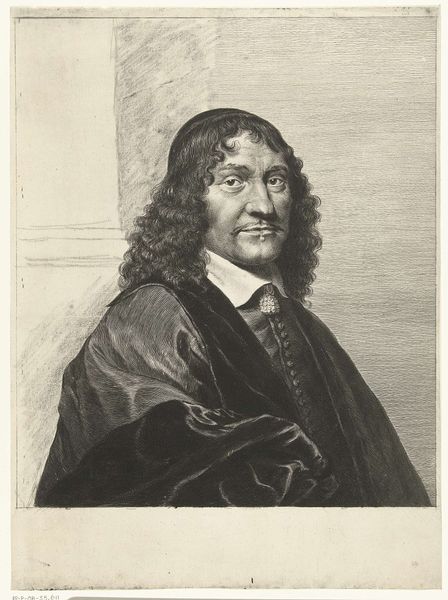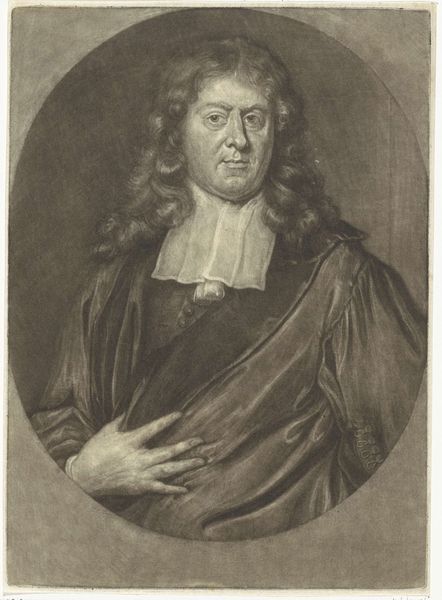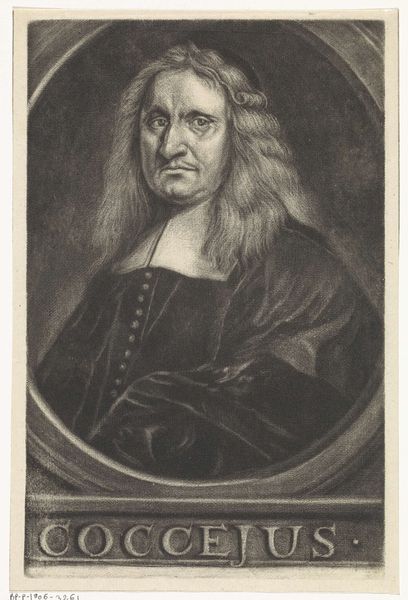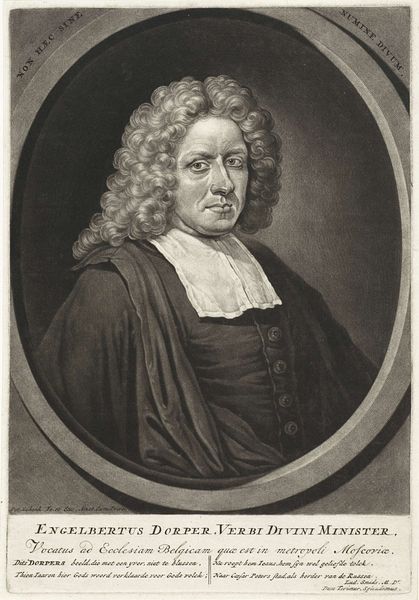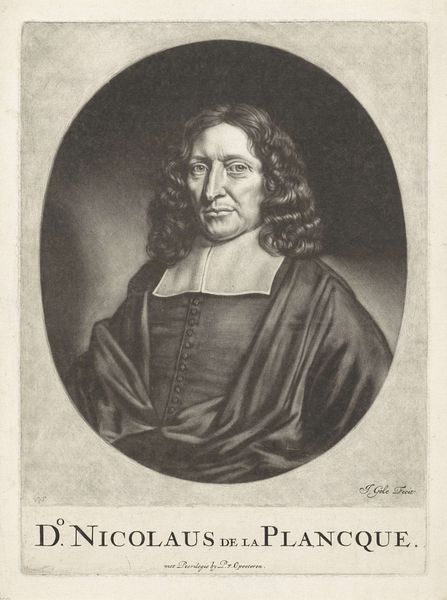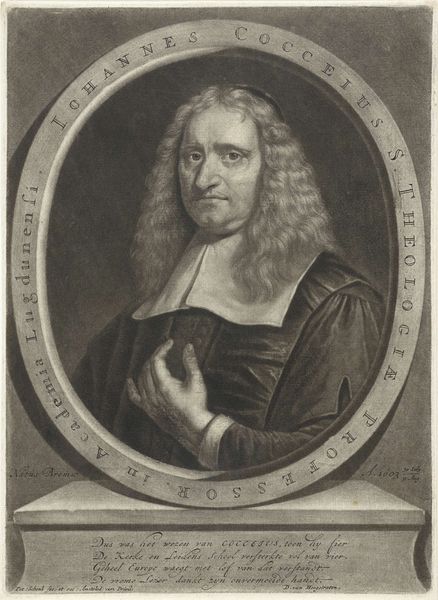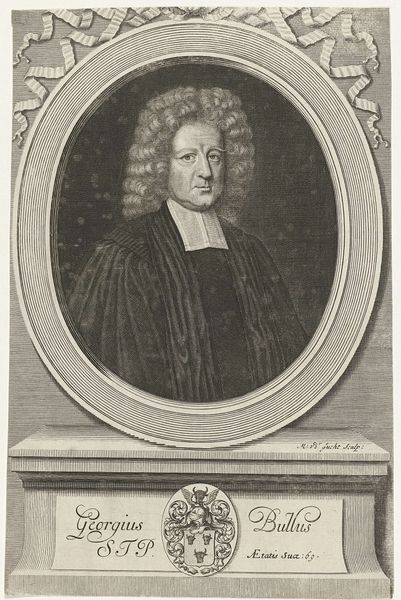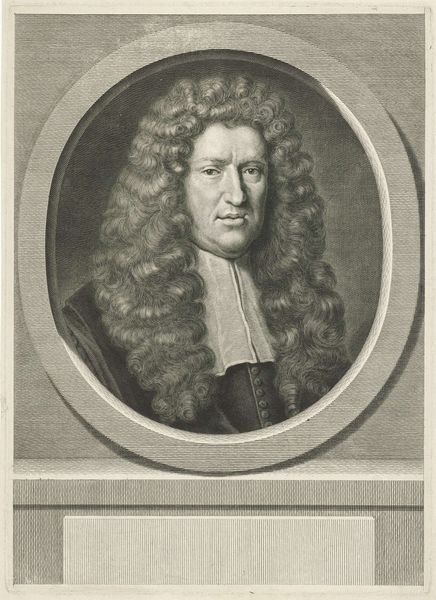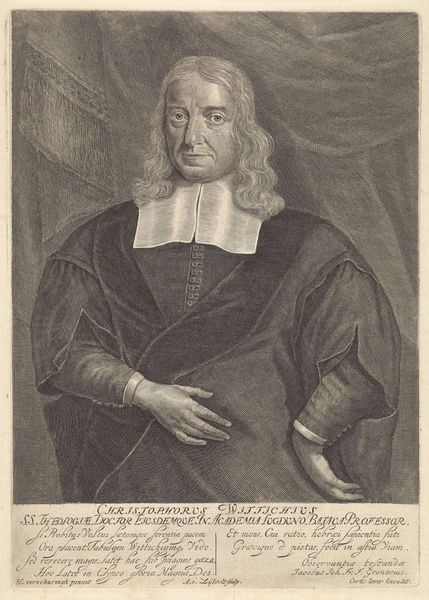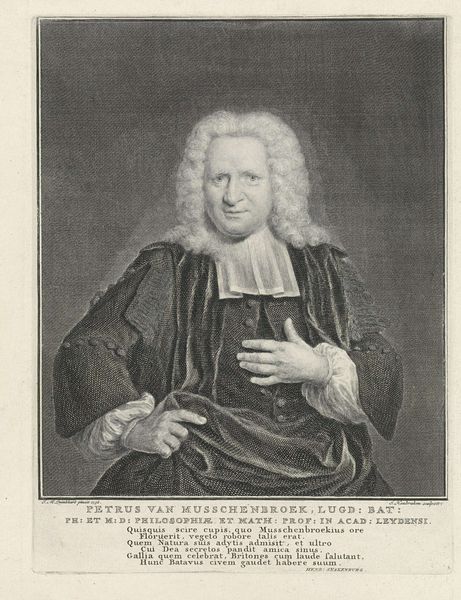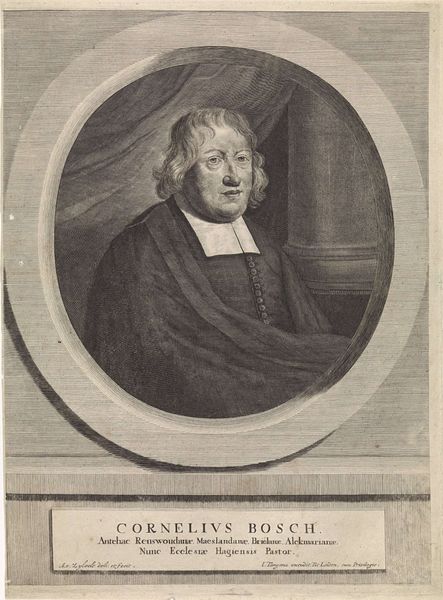
print, engraving
#
portrait
#
baroque
# print
#
genre-painting
#
engraving
Dimensions: height 282 mm, width 207 mm
Copyright: Rijks Museum: Open Domain
Editor: So, this is Pieter Schenk's "Portret van Johannes Cocceius," made sometime between 1670 and 1713. It's an engraving. What I immediately notice is how Cocceius's gaze seems to be judging me… almost challenging. What do you make of this portrait, especially considering its time? Curator: Well, considering this was made during the Baroque era, after Cocceius's death, it's crucial to consider its function in the public sphere. Schenk presents Cocceius not merely as an individual, but as a figurehead, a representation of Reformed theology. Do you see how the inscription at the bottom frames him as a beacon of light against the "Egyptian" darkness? Editor: Yes, I see that now. So, the portrait isn't just a likeness but a piece of propaganda? Curator: Precisely! The Baroque era, particularly in the Dutch Republic, was marked by intense religious and intellectual debates. Cocceius was a prominent theologian; this print would have circulated within academic and religious circles, reinforcing his theological standing. Notice his attire – it marks him as a scholar, a man of learning, furthering that message. Editor: It’s interesting how a seemingly straightforward portrait becomes this layered statement when we consider the social and political context. I hadn’t thought of portraits functioning in this way. Curator: Exactly. Understanding art means understanding its role in shaping public perception and reinforcing power structures. It pushes us to look beyond aesthetics. This print really shows how art and faith intertwined in the Dutch Golden Age, and this artwork really prompts thought and learning.
Comments
No comments
Be the first to comment and join the conversation on the ultimate creative platform.
